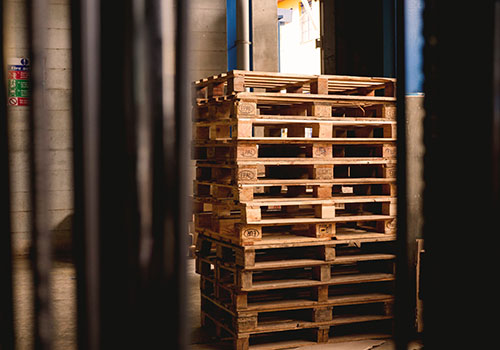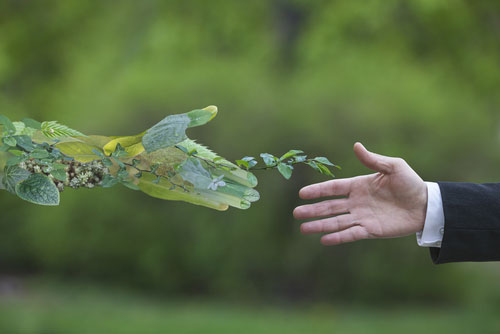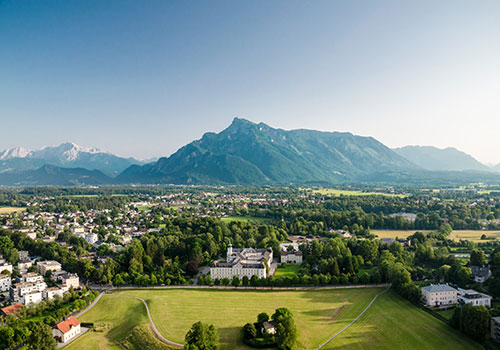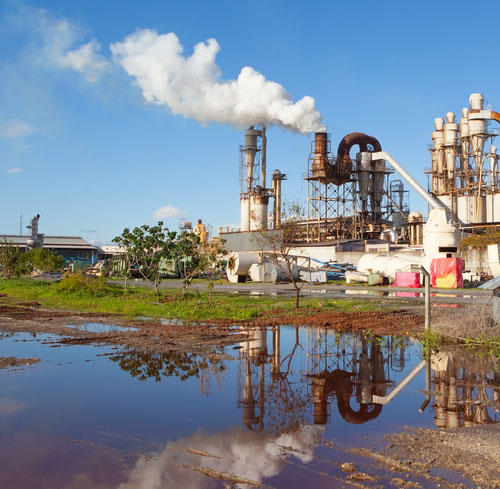What is sustainability? What does it mean? What are the principles and pillars behind sustainability? What examples of sustainability are there in areas like technology, agriculture, the workplace, business, or transportation? How is sustainability connected with supply and demand? Find the answers to these and further questions right below.
What Is Sustainability?
There is no universally agreed definition of sustainability. In fact, there are many different viewpoints on this concept and on how it can be achieved.
Etymologically, the word sustainability comes from sustainable + ity. And sustainable is, for instance, a composition of sustain + able. So if we start from the beginning, to <sustain> means “give support to”, “to hold up”, “to bear” or to “keep up”.
What is sustainability, then? Sustainable is an adjective for something that is able to be sustained, i.e, something that is “bearable” and “capable of being continued at a certain level”. In the end, sustainability can perhaps be seen as the process(es) by which something is kept at a certain level.
Nonetheless, nowadays, because of the environmental and social problems societies around the world are facing, sustainability has been increasingly used in a specific way. Nowadays, sustainability is usually defined as the processes and actions through which humankind avoids the depletion of natural resources, in order to keep an ecological balance that doesn’t allow the quality of life of modern societies to decrease.
In this way, the term “sustainability” has been broadly applied to characterize improvements in areas like natural resources overexploitation, manufacturing operations (its energy use and polluting subproducts), the linear consumption of products, the direction of investments, citizen lifestyle, consumer purchasing behaviours, technological developments or business and general institutional changes. As long as an action causes little, less, or no harm to the natural world – under the belief (not always ensured) ecosystems will keep on operating and generating the conditions that allow for the quality of life of today’s modern societies not to decrease – someone is often claimed to be sustainable.
Daniel Christian Wahl, author of Designing Regenerative Cultures, defends sustainability refers to sustaining the underlying pattern of health, resilience, and adaptability that maintain this planet in a condition where life as a whole can flourish (more about regenerative cultures at the bottom of this piece). And that for this to be possible in the long term, the way modern societies organized shouldn’t be sustained, but rather re-designed using a regenerative perspective (more about the regenerative movement ahead).
Definition of Sustainability and Sustainable Development: What’s the Difference?
The views on sustainability seem to have a stronger focus on the present moment and on keeping things above a certain level. By its turn, sustainable development focuses more on a long-term vision. In fact, sustainable development has a universally agreed definition that was first written in the Brundtland Report (aka Our Common Future), written in 1987.
By adding the concept of <development>, sustainable development means not only that humankind should satisfy its current needs without compromising the ability of future generations doing the same. Along with it also comes an idea of societal progress and an increase in quality of life across the globe.
That’s why an agenda for 2030 with 17 sustainable goals (SDGs) was adopted by the UN members in NY in 2015. Among them are goals such as ending poverty and hunger, ensuring good health and well-being for all, providing quality education or achieving gender equality.
Principles of Sustainability: the 3 Pillars of Sustainability
What is sustainability? The principles of sustainability are the foundations of what this concept represents. Therefore, sustainability is made up of three pillars: the economy, society, and the environment. These principles are also informally used as profit, people and planet.
John Elkington, author of Cannibals with forks and co-founder of the sustainability consultancy firm SustainAbility and Volans (a think tank to help solve the world’s wicked problems), was one of the first people to integrate these 3 principles. He argued companies should start considering this triple bottom line so that they could thrive in the long run (more info about the triple bottom line in our article: sustainable development).
Also known as the grandfather of sustainability, Elkington’s most recent book (2020) Greens Swans: Regenerative Capitalism addresses precisely the need to re-design businesses and the economy, and the opportunities and risks the absence of such change might bring on the short run.
At the same time, consumers and citizens unsatisfied with the long-term damage (both on wealth distribution and on the environment) caused by corporate short-sighted focus on short-term profits, have turned sustainability into a mainstream concept able to ruin a company’s reputation and profits if unaddressed. Today, sustainability is often spoken of with regard to climate change, which threatens life as we know it as is being largely caused by industrial practices. That’s one of the reasons why today many companies have corporate responsibility (CSR) strategies.
- Related:
Coronavirus and Sustainability: Bad For Climate and the Environment?
Some news channels are sharing the positive effects the new coronavirus outbreak is having on the environment and climate. However, unfortunately, coronavirus is likely bad news for ecology in the long-term because it is tied to a dysfunctional economic system. We explain why, here.
Coronavirus And Being Sustainable At Home
During these uncertain times, we can’t forget about the climate crisis. We will gradually add our new pieces connecting sustainability with the current coronavirus outbreak. You can also make sure you don’t miss a beat by subscribing to our monthly newsletter ??
- Coronavirus And Sustainability: 6 Ideas To Act Sustainably Without Leaving Your Couch
- Coronavirus Quarantine: 3 Movies About Minimalism You Should Watch
- Why Is It Important To Support Local And Small Businesses During Coronavirus? So They Can Stay Sustainable.
- Coronavirus: 8 Sustainable Ideas Of What To Do While At Home
- How The Coronavirus Crisis Is Showing Neoliberal Capitalism Needs To Change
- 10 Simple Tips On How To Start A Vegetable Garden
From Sustainability to Regeneration
While sustainability is certainly a trendier concept, there’s another one that’s quickly gaining ground: regeneration. Regeneration takes sustainability even further, acknowledging modern societies’ lifestyles don’t have to be sustained for generations to come.
First, because the structures that allow such conditions are incompatible with the way Nature creates Life (they are economy-oriented, which is often opposed to being nature-oriented). But also because humans have damaged the planet to such an extent that stopping to do harm wouldn’t be enough to recover ecosystems are the percentage of biodiversity to keep them running – we need to enhance and facilitate the conditions in which Life can flourish and ecosystems can recover and become resilient.
The Regenesis Group speaks of Regenerative Development as working to reverse the degeneration of ecosystems through harmonizing human activities with the continuing evolution of life on our planet. Under the premise, we humans are part of Nature and that our relationships, institutions, and processes should be more like Her – Gaia Education has many physical and online training programs available.
Examples of Sustainability: A Long-Term Vision
Sustainability encourages people, politicians, and businesses to make decisions betting on the long term and taking future generations into account. In this way, acting sustainably encompasses a temporal framework of decades (instead of a few months or years) and considers more than the profit or loss involved in the short run. A couple of different examples of sustainability depending on the industry can be found right ahead:
Technology: Examples of What Is Sustainability In Technology

The use of electronic devices is growing every day. Nonetheless, these devices are made of Earth minerals extracted by the mining industry. Mining can be a very polluting industry and the development of new sites certainly has an impact on deforestation.
Therefore, being sustainable in the tech field has a lot to do with using your devices for a long period – so if you want to be sustainable resist you must resist switching your smartphone every other year! It is also about making sure you get disposed of them in a responsible way as can be very polluting if not handled properly.
Soon, sustainability in technology will also be about how the (mostly) lithium-ion batteries of electric cars and solar panels will be disposed of. Companies focusing on recycling these batteries and building products whose core car be maintained and replaced for a new battery will also be the ones at the forefront.
- Related:
- 5 Tips To Reduce Your Environmental Impact On The Internet
- Do Video Games Lead To Greater Violence? The Pros And Cons Of Video Games
- SMS, Instant Messages Or Email – What’s More Sustainable?
Fashion: Examples of Sustainability In Fashion

Fashion, especially fast fashion, focuses on speed and low cost to frequently deliver new collections. Nonetheless, the problem with this industry its negative environmental impact. On one hand, fast-growing cotton generally requires the use of industrial, toxic chemicals (pesticides and fertilizers) that often causes soil pollution and depletion and water eutrophication.
On the other hand, there’s a lot of textile waste and many clothes are made of synthetic fibers which, while being washed, escape to the ocean as microplastics. In this way, if a company makes clothes with resistant materials, uses sustainably produced cotton, applies circular economy principles across its value chain and uses less toxic chemicals: it is being responsible with the environment. These would be an example of sustainability within the fashion industry.
At the same time, sustainability is also about being socially responsible. And overall, the fashion industry isn’t a very responsible one. If you pay attention most labels show that clothes are being made in distant places such as China, Bangladesh or Vietnam. There are many documentaries about this issue.
Apart from the pollution of transporting these items, the manpower behind the manufacturing of these clothes is what’s most worrying. People in these countries (often women and children) usually get really low wages and work under bad conditions. They can hardly improve their social situation and most times keep on working just to pay the bills and survive. This largely contributes to the inequality we see in the world since in 2018 the rich went richer and the poor poorer, according to an Oxfam report.
Transportation: What Is Sustainability In Transportation?

A report from the IPPC says 14% of all greenhouse gas emissions come from transport and most are mostly due to passenger cars. Yes, contrary to what many believe, planes, cargo ships or even trucks aren’t the main contributors to CO2 emissions and are cars can assume much of the blame. So unless someone is driving a car with 4 or 5 passengers, taking public transportation, especially trains but also buses, are more sustainable choices. And if one can simply walk or cycle it’d be even better.
Today, there are even more sophisticated solutions to reduce the pollution caused by moving around. At a vehicle level, the popularity and industry development of alternatives like electric cars (or even hydrogen cars) or electric scooters are growing at a high rate. At the same time, solutions like carpooling, where through which drivers can get their cars empty and save some money (and pollution) are great alternatives. Not to mention the fact that more companies are letting their employees working from home or remotely, allowing them to save polluting kilometers.
-
-
- Related:
-
Zero Waste As An Example Of Sustainability

The zero-waste movement is a lifestyle that encourages people to use all types of resources in a circular way, just like the natural world does. Therefore, the ultimate goal of this philosophy is to avoid resources to follow a linear route and end up as trash in the oceans or landfills. For this, people must refuse what they don’t need, reduce what they’re getting, reuse it and recycle or compost it.
Linked with this lifestyle is also a minimalist way of living, where people are often invited to leave behind and refuse what they don’t need. The movement is also very well known by people taking their own bulks to shops to buy commodities such as chickpeas, rice, or liquid soap. The goal is clear: not to take any trash home. And so is the enemy: plastic.
- Related:
- What Is Staycation: Discover The Latest Trend In Sustainable Tourism
- 5 Tips For For A Greener And More Economical Household
Food and Agriculture: Examples of Sustainability In the Food Sector

A company that tries to grow its crops by not using (or using few) toxic pesticides, focusing instead on organic farming and biomimicry practices is certainly a less polluting one. If it pays fair wages to its employees and manages to still be competitive on the market, it is then being responsible when it comes to profit, people and planet.
Workplace: Examples of Sustainability at the Workplace

Workplaces can also be organized in sustainable ways. For instance, companies betting on new technologies, becoming paperless or providing conditions and training for employees to recycle are being careful about waste management.
At the same time, not asking air-conditioners for very extreme temperatures (that waste much more energy waste and emit GHGs), opening the blinds when there’s sunlight and avoiding plastic cutlery are also good ways to have a sustainable workplace. But there’s nothing like having a sustainability mindset right at the heart of an organization’s core operations and creating a sustainability strategy that measures impacts and creates mitigation solutions.
- Related:
Operations and Value-Chains: Where’s the Sustainability?

Let’s analyze sustainability in operations by imagining a company with very high energy costs as they are steel manufacturers. If it is economically viable, the company could install solar panels and power its operations with this energy. It’d be a medium-long term investment that would most likely be economically attractive in the long run. At the same time, the company would be using renewable energy, which is especially important in places where the electricity grid works mostly on fossil fuels. The raw materials used, how they are sourced and from where, whether products are designed with eco-design principles in mind or distribution optimization are also areas with for room for improvement when it comes to sustainability.
A Company’s Strategy (CSR): Where Is Its Sustainability?

A company’s corporate social responsibility (CSR) is a strategy that integrates the policies and practices firms wanting to create value on their triple bottom line (people, planet, profit). So besides taking care of their workplaces and trying to be eco-friendly along their value-chain, companies with a sustainability mindset are also concerned about social issues like gender equality, happiness at the workplace or taking care of the communities affected by their activities.
At the same time, they don’t underestimate the financial side of the business, where profit is a basic condition for organizations to survive – yet, it’s not the main reason or the main purpose why these businesses exist.
- Related:
- What is CSR – Definition, History And Worldwide Trends
- Consumers Want Companies That Care About People And Planet
- What Are The Benefits Of Having A Network Of CSR Ambassadors?
- 5 Reasons Why Mindfulness Should Be Part Of Companies’ CSR Strategies
- 5 Tips On How Organizations Can Start Developing Their CSR Strategy
- Should SMBs Have A CSR Or Sustainability Strategy? How Can They Create It?
Sustainable Cities: What Does It Mean To Be a Sustainable City?

Sustainable cities can be considered as cities that have strong social, economic and environmental performances. They have good scores when it comes to air pollution, availability of public transportation, the number of educated and employed people, the percentage of green spaces, energy consumption, or access to drinking water.
Presumably, sustainable cities are to be better prepared to face the challenges of urban areas as society develops and as climate change events get more frequent and intense. They are more resilient and adapted to unforeseen circumstances. The most reputable forum regarding sustainable and green cities is the C40 network.
Waste Management: Is There Sustainability In Waste Management?

A factory that takes proper care of its industrial waste and doesn’t drop it in a nearby river or land is acting in a sustainable way. In fact, this factory is being responsible for avoiding the short-term costs of damaging disposal that could have expensive and impactful long-term environmental damage.
- Related:
- China Has A New Policy That Will Ban Plastic Waste: Can It Turn Out To Be Something Good?
- Supply Chains Cause 90% Of Companies’ Environmental Impacts. How Can They Be Improved?
The Connection Between Supply, Demand, and Sustainability

Supply and demand. Demand and supply. We often see these two concepts together and it’s not hard to think about their connection to sustainability and sustainable development. Supply and demand are economic forces of the free market that control what suppliers are willing to manufacture and what consumers are willing to purchase.
Specifically, supply means how much of a certain product, commodity or service suppliers are willing to “give” or produce at a certain price. And demand refers to how much of this product or service consumers are willing to purchase at a particular price.
The relationship between demand and supply carries the forces behind the allocation of resources. According to market economy theories, demand and supply theory will allocate resources in the most efficient way. The connection between this theory and sustainability is that nowadays we’re going over Earth’s biocapacity because we’re “demanding too much”.
This demand is happening not only because the population is increasing. It is also due to the appealing equilibrium price which is, among other things, influenced by a lowed by mass production.
At the same time, sustainability is also often spoken in terms of the supply chain. In this case, it means companies should be concerned about the sustainability of their suppliers’ processes.
Ecosystems’ Sustainability: What Is It?
The sustainability of ecosystems is about keeping the ecological services working. This means an ecosystem’s footprint cannot exceed its biocapacity. But what is biocapacity?
Biocapacity Definition: What Is Biocapacity?

The definition of biocapacity, according to WWF, is “the capacity of ecosystems to produce useful biological materials and to absorb waste materials generated by humans, using current management schemes and extraction technologies.”
Also, according to the Global Footprint Network, biocapacity can change because of climate and depending on which ecosystem services are considered useful inputs to be used in the human economy. Also, according to the National Footprint Accounts, “the biocapacity of an area is calculated by multiplying the actual physical area by the yield factor and the appropriate equivalence factor. Biocapacity is usually expressed in global hectares”.
Sustainability Isn’t Enough: We Need To Regenerate
Bill Reed defends sustainability is being used as a concept that tries to reduce the damage caused by excessive natural resource use – and that this is not enough. “Instead of doing less damage to the environment, it is necessary to learn how one can participate with the environment by using the health of ecological systems as a basis for design” – he declares.
In Daniel Wahl’s book Designing Regenerative Cultures, he claims why we should avoid the expression “ecosystem services” and use instead “ecosystem functions”. Wahl says the first puts nature at the service of humanity, who is meant to control it for its own pleasure and needs. Rather, he explains we are part of Nature, not separate or higher than it. We need to pay more attention to systemic relationships and interactions, to aim to support the resilience and health of the whole system, to foster diversity and redundancies at multiple scales, and to facilitate positive emergence through paying attention to the quality of connections and information flows in the system” – the German biologist defends.
The process of designing this regenerative world starts by spending time understanding how the systems of life work in each unique place and observing many different natural variables behind complex ecosystems. Learning from the natural design (biomimicry), asking many questions before rushing to find solutions to enhance life, and having the precautionary principle in mind are also part of Wahl’s regenerative vision.
[Image credits to sustainability Earth on Shutterstock, responsible business on Shutterstock, ecosystem services on Shutterstock, sustainable fashion on Shutterstock, technology on Shutterstock, bike on Shutterstock, zero waste on Shutterstock, factory pollution on Shutterstock and supply-demand on Shutterstock + Photo by Blake Richard Verdoorn on Unsplash]